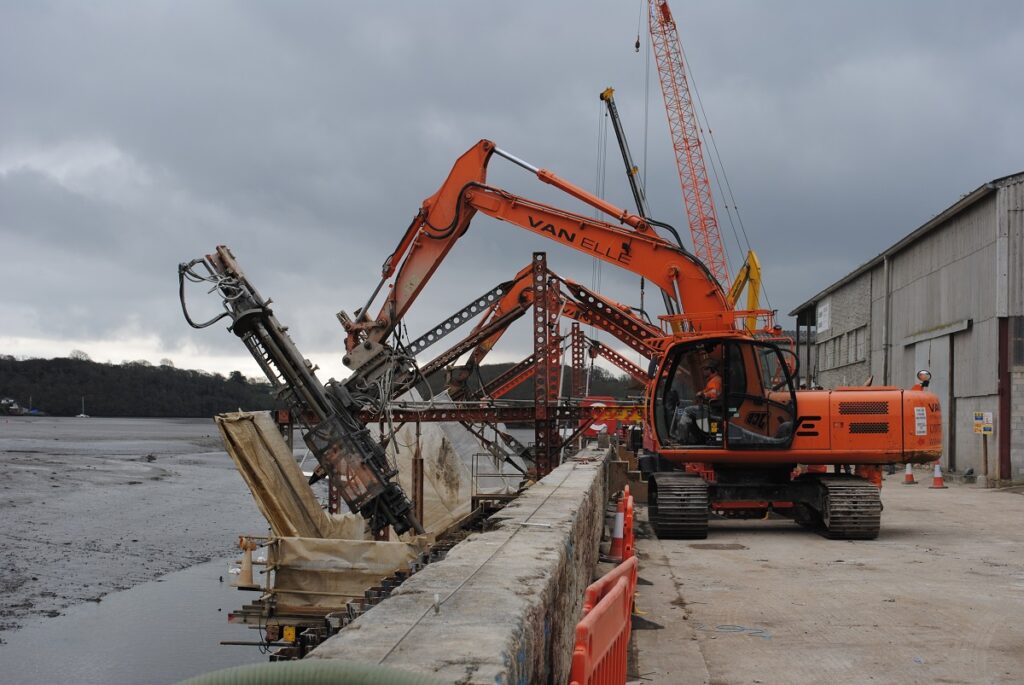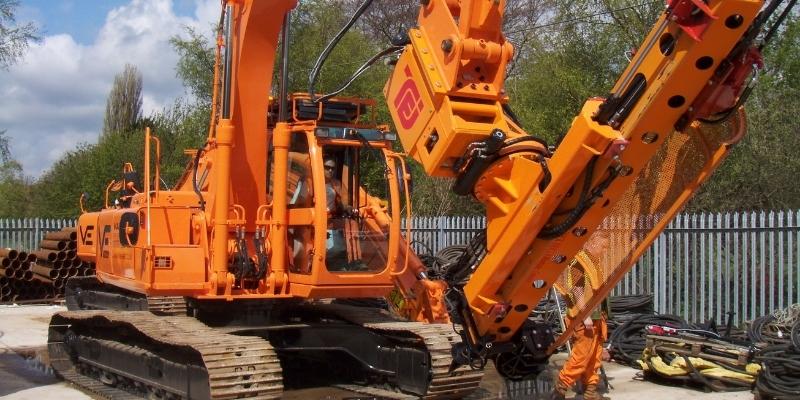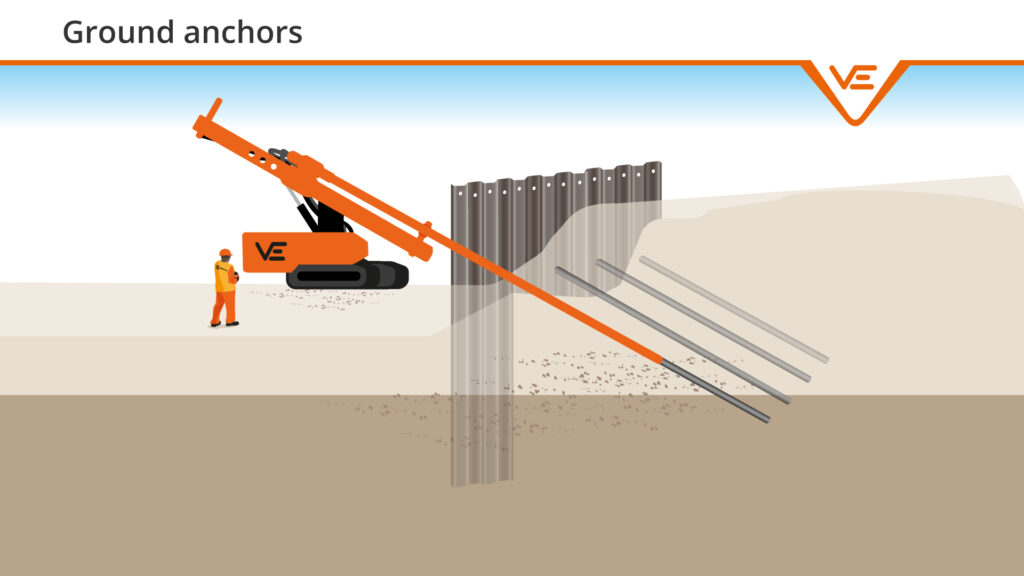Ground anchors are highly versatile and have a range of applications in both building and civil engineering projects and can be installed across a wide range of ground conditions with low environmental impact.
What are ground anchors used for?
Ground anchors are used to prevent horizontal movement by transferring the tensile load through grouted tendons installed to depth when stabilising retaining structures. Anchors can be used across a wide range of structures for both temporary and permanent support of new and existing embedded retaining walls, excavation support, rock faces, tunnel support, marine structures, slope and embankment stabilisation – and so much more.
These retaining structures can include steel sheet piled, reinforced concrete secant and contiguous walls, where ground anchors are installed through a homogenous capping beam. Anchors offer the advantage of minimising horizontal movement without the need for temporary propping for large basement construction.
Ground anchors are typically installed into pre-drilled boreholes, although some are self-drilled hollow bar and grouted into place. Boreholes are formed using rotary bored and rotary percussive rigs, down-the-hole hammers and augers, depending on ground conditions. Multi-strand anchors are post-tensioned after installation and temporary anchors may be de-tensioned and removed. Double corrosion protection (DCP) are used where there is a requirement for an extended design life.
Key rig capabilities:
- Rig loadings: 1.5–40 tonnes
- Bore diameter: 100–300mm (anchors)
- Maximum depth: 40m (anchors)
- Working load: 50–4,250kN (anchors)
We have experience installing the following types of ground anchor:
- Mechanical anchors i.e Platipus Anchors
- Self drill/hollow bar anchors
- Double corrosion protection anchors
- Strand anchors



